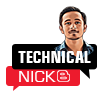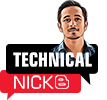I’m sure you’ve heard of NFT, or non-fungible token, at this point. Let’s just review what happened.
Something that is distinct and non-fungible is said to be non-fungible. For instance, because Bitcoin is fungible, you can swap one for another. An illustration of a non-fungible commodity is the limited edition football player card of your favourite player.
In conclusion, by being linked to cryptographically different tokens, non-fungible tokens (NFTs) serve as ownership proof for digital (and occasionally physical) content.
By displaying unchangeable public transactions on the blockchain, NFTs demonstrate ownership. You can view the creator, the quantity, and the exact day and hour it was created using the blockchain. Blockchain data reveals these attempts, even though the underlying asset may theoretically be fraudulent.
Digital Ownership
NFTs are designed with digital ownership at their core. People require a means of establishing their ownership of things. NFTs can be much better explained by an NFT Marketplace Development Company. The linked artwork does not reflect the value of an NFT. Establishing ownership of that specific object is also crucial.
For instance, on March 21, 2006, Jack Dorsey made his first tweet, which reads, “just putting up my twttr.” For the equivalent of $2.9 million (£2.1 million), he sold the tweet to a Malaysian businessman as a non-fungible token (NFT).
Anyone can view or even take a screenshot of the tweet because it is freely available online. Who would want to possess it, anyway?
He didn’t buy the tweet, to answer your query. He purchased a digital certificate with a distinct fingerprint and token name for the tweet. This is distinctive since the author has signed and validated it. It resembles purchasing an autograph more. Crazy, huh?

After establishing the essential idea behind NFTs, let’s explore further innovative uses for NFTs, namely machine NFTs.
A Job Lost to Automation
Let me first share a brief anecdote about my uncle with you before continuing. The narrative should help readers grasp the fundamental concept of machine NFTs.
My uncle, who is in his sixties and resides in South Africa, has no income. He was a factory worker who performed menial jobs; he has no marketable skills.
When the manufacturer opted to automate the majority of its routine procedures, he lost his job. Machines and automation have long since eliminated countless employment. Weavers were supplanted by the spinning Jenny, elevator operators by buttons, and local travel agencies by the internet.
Businesses looking to cut costs are drawn to the idea of replacing a human with a robot or computer.
Robots are quicker and less error-prone than humans. They might work continuously for little or no pay or benefits. Robots can also be helpful to workers since they can do monotonous, risky, or repetitive duties quickly, leaving interesting work to people.
According to one study, automation is believed to have lost almost 400,000 jobs from American manufacturers between 1990 and 2007. However, as firms battle to minimise COVID-19 workplace infections and maintain low operating costs, the pressure to replace workers with machinery is growing.
Millions of bus drivers, taxi drivers, truck drivers, and other transportation professionals could be replaced by self-driving cars, which would have a horrifyingly negative effect on employment. Jobs that involve packing or carrying objects are being replaced by computer-controlled robots.
Access to Automation Increases
Baxter and Sawyer from Rethink Robotics are robots that anyone can programme. They can programme the robot to complete the tasks that have been given to it without the help of a trained technician. As these robots become more intelligent and affordable, more businesses will use them in their settings.

Currently, several companies are creating and utilising gadgets to take the job of bartenders who offer alcoholic beverages or coffee. Robots are taking the place of baristas in many popular drinks made by companies like Briggo, and they can even learn how to manufacture new drinks.
Robots that can separate and handle drugs for consumers are increasingly taking the place of pharmacists at pharmacies. These robots help to reduce errors, and because only a tiny amount of space is needed for the robotic arms, they can also be more compact than their human counterparts.
In fact, the automation and advancements are positive changes. Who benefits from them and who doesn’t is the only issue. We need to consider automation from a human standpoint rather than just as a means of boosting economic margins.
To achieve the necessary balance, we must find a method for individuals to still benefit from automation without losing their primary source of income. This automated period has had a huge impact on my uncle and many others, and something needs to be done about it.
The Use of Machine NFTs
A machine NFT is a contract that shows ownership of a machine, a group of machines, or a portion of a machine on a public ledger. Without the requirement for a centralised authority, anyone can use machine NFT to prove that they are the owner of a machine or a stake in a machine.
Also Read: How To Create An NFT Minting Website?
I’ll further explain it with this example. The seller gave you some paperwork when you purchased your first car, and you signed the majority of it. This paperwork served as socially accepted documentation with the government to prove that you are the owner of the vehicle.
In the case of machine NFTs, it is founded in a math/code stamp rather than a government stamp. Anyone, wherever, can independently confirm the authenticity and legality of the contract by consulting the math rather than consulting the established authority. Anyone with an internet connection can participate in the machine economy; as a result, machine NFT holders benefit as more machines operate.
The economy of things against the Internet of Things
The Internet of Things, commonly known as Web2, is currently controlled by governments and companies. These centralised entities are the only ones with complete access to the limited amount of money created. In addition, because these organisations are required for any machine that wants to provide a service, it compromises people’s functionality, availability, and privacy.

In the Economy of All Things, these constraints are gone. To solve the issues in Web2, Web3 combines the improved functionality of Web2 with the decentralised capability of Web1. Web3 will allow machines to use less time and energy while performing activities more effectively. Individuals can own and construct their own components with Web3. They gain at the end of the day.
Think about the Uber Situation
What if local governments jointly owned the autonomous vehicles present there? Each resident of the neighbourhood would get a share of the ride fees for the vehicle. When there is no demand for journeys, the neighbourhood may decide to use the vehicles to deliver parcels and groceries or sell the data they collect for extra cash. The community would receive passive income from the devices, which might be sufficient to pay for the cost of utilising the same services.
Everyone in a community can derive increasing value from the equipment that keeps things running without the need for Big Tech middlemen. Humans can spend their time on more fulfilling or creative things while robots do the labour without worrying about losing their jobs.
The Last Wise Words
Because they represent actual machines that deliver goods and services to people and other devices in the real world, machine NFTs are legitimate companies that generate income. It offers creators, owners, customers, and the machines themselves a stake in the devices that drive the economy. Additionally, it equips machines with the means to support, maintain, and advance themselves for the benefit of the economy.
Author Bio
Suzanne Dieze is a technical content writer and preferably writing technology-based blogs and articles. I have a few published pieces under Mobile Based Applications, and Data science consists of proven techniques, future costs, and benefits.
To Read More Tech Blogs Visit: Technical Nick

















